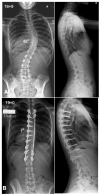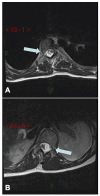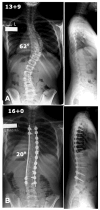Techniques of Deformity Correction in Adolescent Idiopathic Scoliosis-A Narrative Review of the Existing Literature
- PMID: 40217846
- PMCID: PMC11989510
- DOI: 10.3390/jcm14072396
Techniques of Deformity Correction in Adolescent Idiopathic Scoliosis-A Narrative Review of the Existing Literature
Abstract
Surgical management of adolescent idiopathic scoliosis [AIS] is a complex undertaking with the primary goals to correct the deformity, maintain sagittal balance, preserve pulmonary function, maximize postoperative function, and improve or at least not harm the function of the lumbar spine. The evolution of surgical techniques for AIS has been remarkable, transitioning from rudimentary methods of spinal correction to highly refined, biomechanically sound procedures. Modern techniques incorporate advanced three-dimensional correction strategies, often leveraging pedicle screw constructs, which provide superior rotational control of the vertebral column. A number of surgical techniques have been described in the literature, each having its own pros and cons. This narrative review provides a detailed analysis of the contemporary surgical techniques used in the treatment of patients with AIS.
Keywords: adolescent idiopathic scoliosis; deformity surgery; surgical techniques.
Conflict of interest statement
The authors declare no conflicts of interest.
Figures








References
Publication types
LinkOut - more resources
Full Text Sources
Miscellaneous

